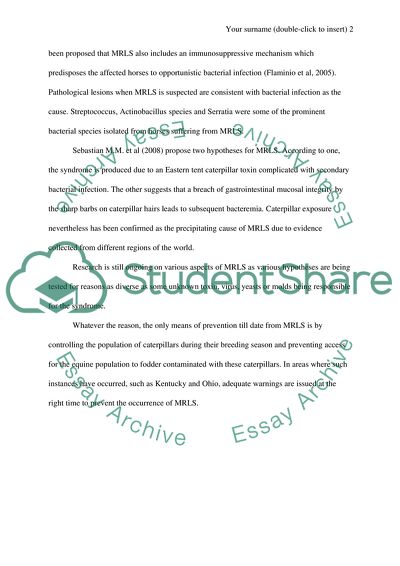Mare Reproductive Loss Syndrome Essay Example | Topics and Well Written Essays - 500 words. Retrieved from https://studentshare.org/miscellaneous/1549909-mare-reproductive-loss-syndrome
Mare Reproductive Loss Syndrome Essay Example | Topics and Well Written Essays - 500 Words. https://studentshare.org/miscellaneous/1549909-mare-reproductive-loss-syndrome.


